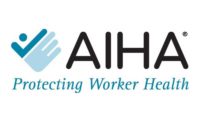A NIOSH Science Blog post
Systematic review for occupational safety and health questions

What is systematic review?
There are many different types of occupational safety and health questions and a variety of scientific methods to answer them. Systematic review is one method for comprehensively reviewing a body of scientific literature. It is an explicit and transparent process to identify, select, synthesize, and critically appraise the scientific literature relevant to a specific question.
Systematic review methods include:
- A clear statement of the question that the literature search is intended to address
- Explicit, pre-specified methods to gather and assess the quality of the evidence that minimizes bias
- Documentation of criteria for decision making
One benefit of the use of systematic review methods is improving the transparency and public documentation of how scientific evidence is collected. Its use also helps document the thoroughness of a scientific assessment and the use of the best available evidence. The use of systematic review methods does not replace the need for expert scientific judgment.
The steps in systematic review include the following:
- Define the question
- Create a systematic review plan or protocol
- Conduct a literature review
- Evaluate individual studies and extract data
- Integrate and interpret data
- Make conclusions about the body of evidence and produce a report.
See the references and resources provided below for more detailed information about these steps.
What efforts does NIOSH have related to systematic review?
The National Institute for Occupational Safety and Health (NIOSH) has developed resources to assist with the development of systematic reviews focused on occupational safety and health topics. In 2016, NIOSH asked the RAND Corporation to develop a framework for the application of traditional systematic review elements, developed for healthcare intervention assessments, to occupational safety and health and damage-risk criteria in particular. Click here to read the RAND report. A NIOSH-authored commentary was published in the American Journal of Industrial Medicine, Using Systematic Review in Occupational Safety and Health, in November 2017.
NIOSH scientists are also actively involved with Cochrane Work systematic reviews. Cochrane Work has produced and published systematic reviews on a wide variety of occupational safety and health interventions. Cochrane Work uses the review process that is elaborated in the Cochrane Handbook for Systematic Reviews of health care interventions to ensure they assess the evidence in the most reliable way.
What are some of the safety and health considerations?
There are unique challenges in applying systematic review methods to occupational safety and health questions. These questions are often oriented to understanding the role that occupational exposures play in causing adverse health outcomes. Answering this question can involve integrating evidence from human studies, animal studies, and in vitro studies rather than conducting controlled clinical trials. The diversity of evidence and lack of randomized control trials create the need to adapt systematic review methods to occupational safety and health questions.
Another consideration, not unique to occupational safety and health, is that a systematic review can require substantial resources including qualified personnel, training, software and other support systems. A scaling and adapting of the systematic review process could be considered for some questions and where resources are limited.
What next?
With a call for increasing transparency, documentation, and reliability of scientific results, systematic review is a tool we should have in our scientific assessment toolbox. The appropriate use of systematic review may help improve the understanding of the scientific basis for authoritative recommendations in the field of occupational safety and health. Since these recommendations are widely used by public and private sector employers, workers, labor unions, safety and health practitioners, and government agencies, the use of a transparent and documented process may improve their understanding, credibility, and utility.
What is your experience with systematic review?
Please click here to visit the NIOSH website and share your experiences with developing a systematic review or utilizing a systematic review to make a decision in the field of occupational safety and health.
References
- Howard J, Piacentino J, MacMahon K, Schulte P [2017]. Using systematic review in occupational safety and health. Am J Ind Med 60(11):921-929. http://dx.doi.org/10.1002/ajim.22771
- RAND Corporation [2016]. Systematic reviews for occupational safety and health questions: resources for evidence synthesis. Santa Monica CA: July, 1-88. http://dx.doi.org/10.7249/RR1463
- Ruotsalainen J, Sauni R, Verbeek J [2017]. Cochran Work – championing facts since 2003. Occup Med 67(7):504-506. https://doi.org/10.1093/occmed/kqx073
Looking for a reprint of this article?
From high-res PDFs to custom plaques, order your copy today!







